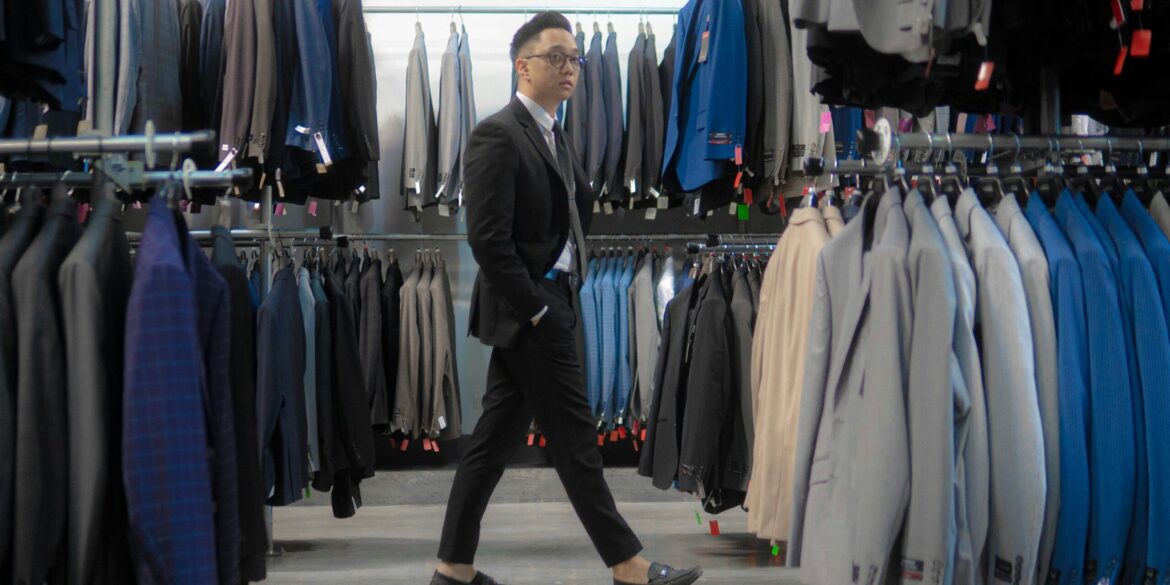In 2025, men’s fashion is undergoing a transformative shift that reflects not only changes in lifestyle and work culture but also deeper values related to sustainability, identity, and comfort. No longer confined by rigid dress codes and formal expectations, the modern man’s wardrobe now emphasizes adaptability, ethical design, and personal expression over conformity.
Industry reports and fashion briefings highlight how traditional menswear staples—like suits, blazers, and tailored outerwear—are being reimagined with stretch fabrics, relaxed silhouettes, and multi-functional uses. These garments are no longer reserved for boardroom meetings or special occasions; they are designed to transition effortlessly into more casual environments without sacrificing elegance or professionalism. A suit in 2025 is likely to feature flexible fabrics, breathable linings, and cuts that accommodate movement, making it suitable for a wide range of settings throughout the day.
Designers are increasingly moving away from the notion of “formality equals structure.” Instead, they are embracing tailoring that supports both physical comfort and visual versatility. For instance, blazers are now being styled to work equally well with dress pants or high-quality denim, allowing men to navigate both professional and social settings without changing outfits. This shift toward adaptable styling is reflective of a broader movement in men’s fashion toward functional sophistication.
In tandem with this move toward flexibility is a growing emphasis on sustainability. Menswear brands are investing in eco-conscious materials such as organic cotton, bamboo viscose, recycled polyester, and even innovative plant-based textiles. Sustainable production processes, ethical labor practices, and recyclable packaging have also become priorities for many labels. Consumers are increasingly scrutinizing the environmental and ethical impact of their purchases, pushing the fashion industry to adopt more transparent and responsible practices.
This evolution is not merely a trend but a response to changing consumer expectations. Modern buyers are no longer content with clothing that looks good but fails to align with their values. For many, a suit or jacket now needs to reflect a commitment to environmental responsibility and social ethics just as much as personal style. The phrase “buy less, but better” has taken hold, encouraging investment in higher-quality, longer-lasting pieces rather than fast fashion or seasonal throwaways.
Color palettes have also seen a marked shift. Where men’s wardrobes were once dominated by monochromes—black, navy, and gray—2025 sees an embrace of softer, more expressive hues. Pastel shades like sage green, blush pink, and muted blues are being incorporated into formal and casual wear alike, providing a fresh visual language that feels both modern and approachable. Neutrals like taupe, sand, and cream are being used to build versatile base wardrobes that work across seasons and settings.
Comfort continues to be a central concern in this new menswear landscape. Trousers are trending toward wider cuts and looser fits that allow for easier movement, while layered outfits are constructed with breathable, lightweight fabrics designed for long wear. Athleisure continues to influence tailoring, with technical materials and performance-inspired features—like moisture-wicking linings or stretch waistbands—making their way into even the most classic pieces.
This movement is deeply connected to the broader shift in how people live and work. With the hybrid workplace becoming a long-term reality for many professionals, men are seeking clothing that adapts to multiple roles and environments. The strict dichotomy between “workwear” and “weekend wear” is eroding, replaced by clothing that can carry someone from a client presentation to a social gathering without appearing out of place.
Furthermore, fashion is becoming more personal. As men are increasingly encouraged to express individuality through their clothing choices, traditional rules are giving way to experimentation and self-styling. The goal is no longer to emulate a standard look but to communicate who you are—through fabric, fit, color, and composition.
This shift marks an important evolution in menswear. It recognizes that modern men are looking for more than just a good-looking outfit—they want clothes that support how they move, how they live, and what they believe in. Whether it’s a blazer that pairs just as well with sneakers as it does with brogues, or a suit made from biodegradable fabric, the emphasis is on versatility with purpose.
Ultimately, the message is clear: the modern man’s wardrobe in 2025 is built on the pillars of comfort, sustainability, and personal identity. The rigid, one-size-fits-all approach to men’s style is being replaced by garments that are as dynamic and diverse as the people who wear them.

